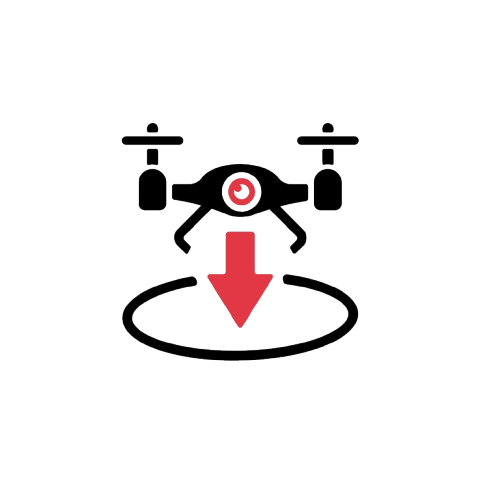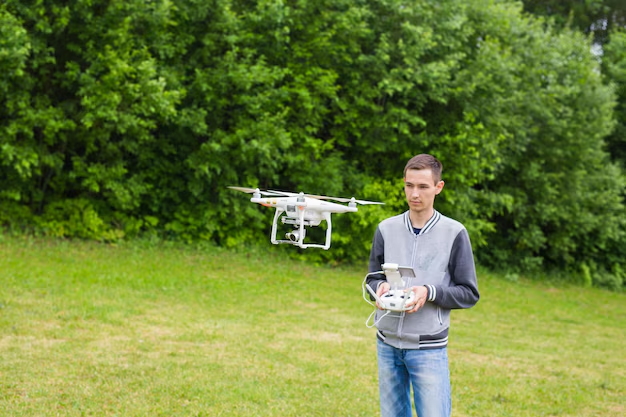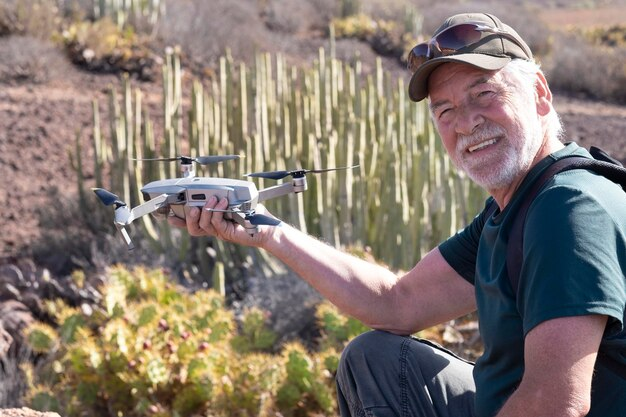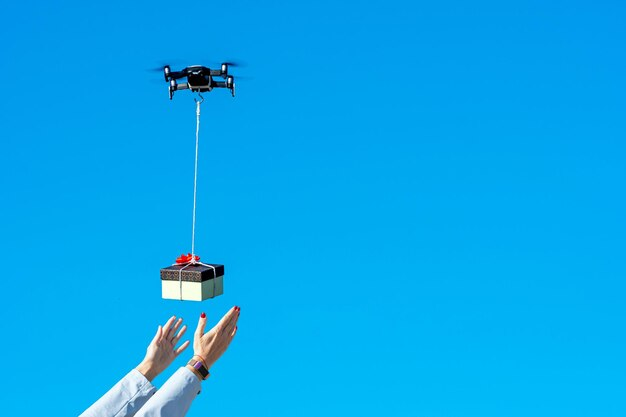Imagine a world where hospitals cut their carbon footprint—just by taking delivery to the skies, where blood samples don’t deteriorate en route, and where life-saving medications reach distant towns in minutes. Drone delivery in healthcare holds that promise.
Benefits of drones are more than just speed. Especially in emergencies or remote locations, they provide a reasonable, sustainable substitute for conventional transportation. UAV delivery service demonstrates its value from Rwanda’s blood supply networks to NHS trials in the United Kingdom. This paper investigates why drones are changing medical logistics, why they are ecologically better, and what obstacles still exist.
The Urgent Need for Change in Medical Logistics
Outdated delivery models are stressing healthcare systems all across. Often due to last-mile distribution issues, around 2 billion people lack access to required medications. Traditional transportation battles rural routes, traffic congestion, and high emissions—issues exacerbated during crises. When vaccine distribution bottlenecks claimed lives, the COVID-19 epidemic revealed these flaws.
The healthcare industry generates 4.4% of world CO2 emissions; medical transportation is a key contributor. This ideal storm of inefficiency, environmental damage, and accessibility barriers presents a pressing case for invention. Offering quicker reaction times and fulfilling sustainability objectives that terrestrial transportation cannot match, drone delivery surfaces as a timely remedy.
1. Speed: When Every Second Counts
Delays in crises cost lives. A cardiac arrest victim needs a defibrillator in minutes. A rural clinic waiting for immunizations cannot afford a six-hour trip. Delivery drones excel here. Examining the Scottish Ambulance Service’s testing, drones delivered defibrillators up to three times faster than ambulances, significantly increasing survival chances. For ultra-fast response times, drones take straight paths, avoiding traffic, rugged terrain, and logistical bottlenecks. Time-sensitive items like blood, organs, or antivenom, this is vital. The advantages of drones in this regard are apparent: quicker treatment results in fewer deaths.
2. Cutting Costs: Is Drone Delivery Affordable?
Drone delivery cost is one big worry. Do drones cost less than bikes or vans? Surprisingly, yes—eventually. Traditional transport calls for vehicle upkeep, driver salaries, and fuel expenditures. Drone logistics use little infrastructure, less energy, and reduce driver expenses. Over time, a UK study indicated that UAV delivery service for medical samples might cut expenses by 30 to 50%. For remote clinics with tight budgets, this cost-effectiveness transforms drone delivery.
3. Eco-Friendly Logistics: Drones vs. Traditional Transport
Logistics in healthcare account for 4.4% of worldwide CO2 emissions. Drones provide a more environmentally friendly option with far less impact. One drone delivery produces up to 90% less CO2 than a diesel van. Project CAELUS of the NHS believes switching to drones could reduce tonnes of emissions yearly. Beyond speed, the advantages of drones include helping hospitals keep consistent medical supply chains and reach net-zero sustainability targets.
4. Reaching the Unreachable: Drones in Remote Areas
Some people live in geographic nightmares—islands, mountains, or war zones where conventional distribution systems struggle. Drones quickly get over these obstacles. For instance, Cornwall’s Isles of Scilly often suffer three-day delivery delays from inclement weather. Now, drones guarantee prompt treatment when carrying medications and blood samples in under one hour. This is a life-saving invention for remote people, and it is not only about ease.
5. Challenges: What’s Holding Drones Back?
Though drones have obvious advantages, many obstacles still stand in the way of their general use. Payload constraints are significant; most medical drones only carry 2-4 kg, limiting bulk supplies. Battery life is another difficulty since present designs require regular recharging, restricting long-range operations. Strict airspace rules also hinder development, although initiatives like the Welsh Health Drone Innovation Partnership advocate for regulatory changes to allow more general use.
6. The Future: Where Drone Delivery Is Headed
As technology develops, experts forecast everyday medical drone use within five to ten years. Among the key upcoming changes are artificial intelligence-powered routing to avoid weather and impediments, greater payload capacity for bulkier medical equipment, and automated dispatch hubs for 24/7 operations.
Drones will only become more beneficial as these inventions develop so that they will be necessary for global healthcare logistics.
7. Real-World Success Stories: Drones Making an Impact Today
Many healthcare institutions all around are already experiencing outstanding outcomes from drone delivery. In Rwanda, drones carry blood to inaccessible clinics, cutting maternal death rates by 50% in some places. The NHS in England has effectively moved test samples and chemotherapy medications by drone, reducing delivery times from hours to minutes.
In the interim, drones in the Netherlands keep perfect temperature control for monoclonal antibodies during transport. These are not hypothetical advantages; they are results showing how UAV delivery service addresses current, genuine medical issues. The success of these initiatives offers a model for more widespread adoption throughout world healthcare systems.
8. Temperature Control: Keeping Medical Supplies Safe in Transit
Many medical supplies call for rigorous temperature control, from vaccines to blood products. Drones shine in this field through creative packaging ideas. Often outperforming land transportation, which suffers traffic delays, specialized containers with phase-change materials keep constant temperatures during flight.
A Dutch study demonstrated no deterioration for temperature-sensitive drugs such as monoclonal antibodies, delivered by drone in ideal conditions. Drone delivery is instrumental for rural clinics without adequate storage capacity since it is so reliable. Technological advancements will lead to progressively more complex climate-controlled drone systems that securely and effectively carry a larger spectrum of temperature-sensitive medicinal items.
9. Public Perception: Building Trust in Drone Deliveries
Although the advantages of drones are obvious, general acceptability is still very important for broad use. Some patients have safety, noise, or privacy concerns. Through community involvement, successful programs show safety elements such as parachute recovery systems and silent electric propulsion, thereby addressing these concerns.
Healthcare professionals in Scotland say that doubt gives way to excitement after patients witness drones carrying life-saving drugs. The key is education: demonstrating how drones lower road traffic accidents involving medical couriers, safeguard privacy through safe containers, and improve healthcare access. Public Confidence will keep growing with the technology as more individuals get first-hand experience with dependable drone deliveries.
Conclusion
Speed, cost savings, and sustainability are among the clear advantages drones offer in healthcare. Although issues such drone delivery cost and laws remain, actual trials show their capacity to transform medical supply networks. From blood shipments in Scotland to island clinics in Cornwall, UAV delivery service is the future of medical logistics, not science fiction.
Ready to explore drone solutions for your healthcare needs? Learn more at BulBulDelivery.

















